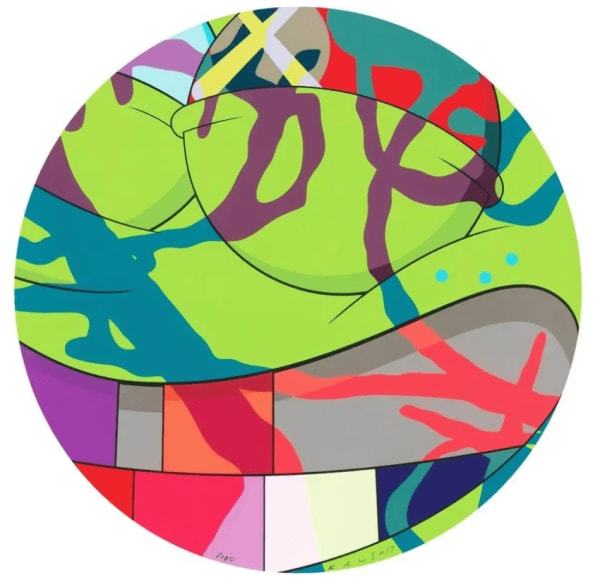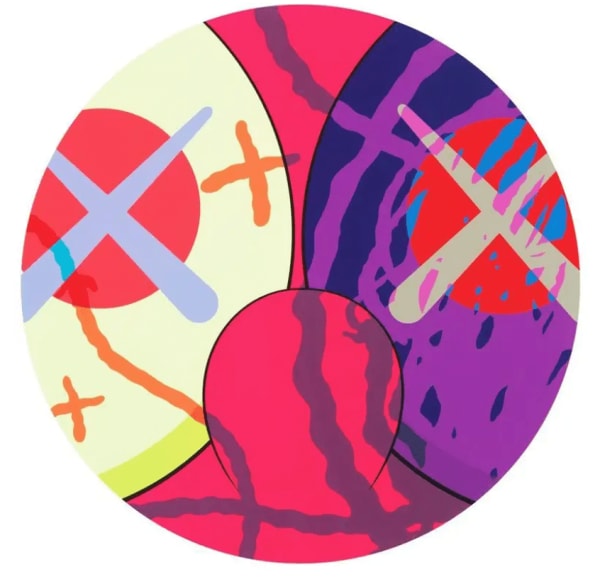KAWS, born Brian Donnelly in 1974 in Jersey City, New Jersey, has evolved from an underground graffiti artist into one of the most influential figures in contemporary art. His story begins in the streets of New York, where he first made his mark in the 1990s by subverting billboards, phone booths, and bus shelter ads with his now-iconic imagery-cartoonish skulls, crossed-out eyes, and reworked pop characters. These early interventions weren't just vandalism; they were statements, injecting humor, critique, and originality into mass media's visual landscape. The name "KAWS" itself has no particular meaning - it was chosen for the way the letters looked together - but it would soon become synonymous with a new era of cross-cultural creativity.
Donnelly's formal background in illustration, earned at the School of Visual Arts in New York, equipped him with the technical skills to take his graffiti into more refined realms. His early work as an animator for shows like Daria and 101 Dalmatians at Disney helped shape the clean, graphic aesthetic that would come to define his practice. Inspired by artists like Gerhard Richter, Claes Oldenburg, and Keith Haring, KAWS embraced the idea of accessible, democratic art - an ethos that still runs through his work today. He also cites Takashi Murakami, with whom he later collaborated, as a major influence in blending high art with commercial sensibility.
KAWS's breakthrough into the global art scene came in the early 2000s, when he began creating limited-edition vinyl toys - particularly the Companion, a cartoon-like figure with gloved hands, X-eyes, and a melancholic stance. These quickly gained a cult following in both art and fashion circles, propelling him into a unique cultural niche. What followed was a meteoric rise: major collaborations with brands like Nike, Dior, Uniqlo, and Supreme; museum exhibitions in institutions such as the Brooklyn Museum and the Yuz Museum; and auction records that placed him firmly among the top-selling contemporary artists.
His style is distinct - rooted in clean lines, flat colors, and instantly recognizable characters drawn from the worlds of animation, advertising, and fine art. KAWS reinterprets figures like SpongeBob, The Simpsons, and Mickey Mouse with a twist of melancholy and existentialism. Despite their playful forms, his works often carry emotional weight, dealing with themes of loneliness, identity, and mass culture. His paintings, prints, and sculptures - ranging from small bronzes to towering public installations - are marked by a seamless blend of pop familiarity and minimalist refinement.
Away from the spotlight, KAWS maintains a relatively low profile. He lives and works in Brooklyn, New York, with his wife, designer Julia Chiang, and their two children. Though intensely private, he has spoken about how fatherhood has influenced his work, shifting his perspective on play, vulnerability, and creativity. He continues to be hands-on in his practice, from sketching designs to overseeing production - ensuring that the personal remains present in a brand that has grown to global proportions.
In many ways, KAWS represents a new kind of artist - one who moves effortlessly between the gallery, the street, and the marketplace without compromising artistic integrity. His ability to speak to both casual fans and seasoned collectors, across disciplines and continents, makes his work not only compelling but also emblematic of the evolving role of the artist in the 21st century. As the lines between high and low culture continue to blur, KAWS stands as a symbol of how far subversion, sincerity, and strong design can go.
For more information on KAWS, contact our galleries via info@guyhepner.com. Looking to sell? We can help. Find out how to sell KAWS artworks with our London and New York galleries.









